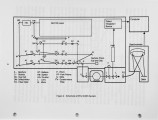| Title |
Coherent Anti-Stokes Raman Spectroscopy CARS Measurements in a Laminar Flame Coal Combustor |
| Creator |
Hancock, Robert D.; Boyack, Kevin W.; Hedman, Paul O. |
| Publisher |
Digitized by J. Willard Marriott Library, University of Utah |
| Date |
1988 |
| Spatial Coverage |
presented at Pittsburgh, Pennsylvania |
| Abstract |
Coherent Anti-Stokes Raman Spectroscopy (CARS) temperature measurements have been demonstrated in a coal-seeded natural gas flame. An incoherent addition of nonresonant background caused by particle induced gas breakdown was observed in the coal-seeded gas flame spectra. By properly accounting for this nonresonant addition, consistent temperature measurements can be obtained for coal-seeded flames. Corrected fit temperatures were found to be independent of the level of background in the individual spectra. No particle breakdown was observed in the spectra obtained for this study, but given higher coal feed rates and different laser energies such breakdown might be observed. Single shot temperature measurements were obtained in the coal-seeded gas flame. These single shot spectra were fit successfully for temperature when the background level was less than about 20% of the nitrogen peak. Error in fitting without background subtraction demonstrated a linear relationship to background level. With proper calibration, temperatures in coal-seeded flames can be determined by fitting without background subtraction. |
| Type |
Text |
| Format |
application/pdf |
| Language |
eng |
| Rights |
This material may be protected by copyright. Permission required for use in any form. For further information please contact the American Flame Research Committee. |
| Conversion Specifications |
Original scanned with Canon EOS-1Ds Mark II, 16.7 megapixel digital camera and saved as 400 ppi uncompressed TIFF, 16 bit depth. |
| Scanning Technician |
Cliodhna Davis |
| ARK |
ark:/87278/s6pc34zv |
| Setname |
uu_afrc |
| ID |
4681 |
| Reference URL |
https://collections.lib.utah.edu/ark:/87278/s6pc34zv |




















